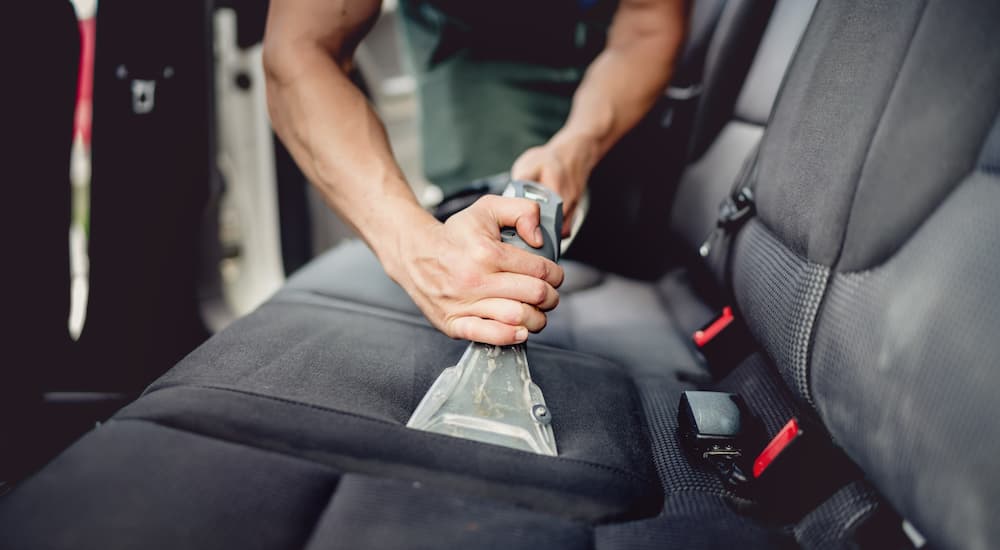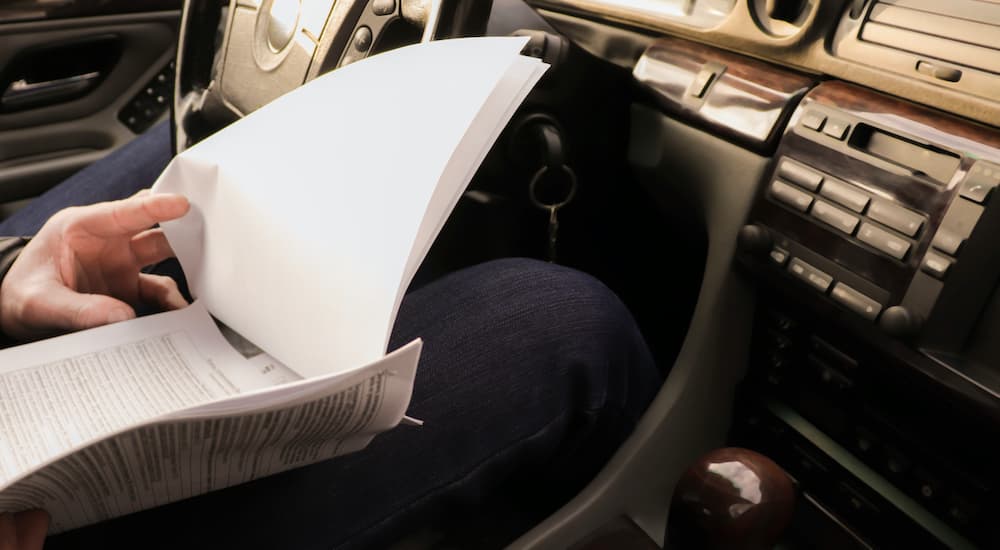So, you’ve decided to sell your vehicle. You might have your eye on something new, or you might just need the extra money. Whatever your reasoning might be, you’re about to undertake a process that requires a little work to get a significant profit. Shopping for a used vehicle is time-consuming, and selling one is just as daunting. Don’t worry! Getting ready to put your car on the market isn’t complicated. If you’re in a position where you’re saying to yourself, “it’s time I sell my car,” we’re here to help. We’ve created this quick guide to getting your vehicle ready for the market. Following these steps will make the process of selling as smooth as it can possibly be.
Market Research
The journey to start selling your car starts with a single step, and the first step in your quest to sell your vehicle requires a little research on your part. (Don’t worry, it’s not a lot!) The first thing you need to decide upon is the price. Setting the best price starts with knowing when your car was manufactured and how many miles you have on it. All vehicles lose their original starting value from the moment they’re driven off the lot. This process is called depreciation, and some vehicles depreciate in value much quicker than others.
There are plenty of resources that can inform you of the going rate for the vehicle you’re trying to sell. Publications such as Kelley Blue Book have a yearly guide that lists the different makes and models. Don’t forget to take into account how many miles are on your vehicle and what condition it is actually in. Online resources can be a great guide for determining price, but the worth of your vehicle can still greatly fluctuate depending on how well maintained you have kept it.
Also, you’ll want to research the best places to sell your car. Are you going to go the route of Craigslist or Facebook Marketplace? Are you going to sell to a dealership? Are you just going to leave it by the road with a “For Sale” sign and hope for the best? There are pros and cons to each of these selling methods, so doing appropriate research is necessary to help you find the best way to sell to get the most money and save the most time.
Gather All the Necessary Paperwork
This is a task that many feel is the most time-consuming; however, it is one of the most important steps. After all, you can’t sell your vehicle without the title. Each state has different rules that apply to selling a vehicle, so be sure to check with what they are; you might need to get additional paperwork ready. Aside from the title, another important document you should look into getting is a CARFAX report. This details the complete history of your vehicle and will include any accidents that might have occurred. Similarly, gathering your maintenance records for the car can help you show you have stayed on top of routine maintenance, and buyers are more likely to pay more for a car they know has been taken care of.

A Thorough Inspection and Detailing
Think back to the last time you purchased a used car. If you purchased one from a dealership, the vehicle was likely in pristine condition, inside and out. Now that you’re in the position of the selling party, the process begins all over again. A good-looking car is easier to sell than one that is dirty or needs a lot of work done, especially when you are selling privately.
Before you even consider putting your car on the market, take it to a mechanic for a full inspection. If any lingering repairs need to be done, it’s best to take care of them when you are trying to make a private sale. This includes having an emission test performed as well. Depending upon where you live, you can be held liable for any mechanical problems that occur within a certain time frame of selling a vehicle. Certain states also have buyer protection laws, meaning you can be sued for selling a vehicle that you knew had pre-existing problems or mechanical issues. If you are selling to a dealership, you can cut back on this category as they often can take care of any issues with the car for a low cost to them, so it’s not worth it for you to do.
Once you know that your vehicle is in a mechanical condition to sell, you should consider getting it thoroughly cleaned out and detailed. Once again, think back to the last time you were at a car dealership. Did you see trash inside the vehicle? Did it look like it wasn’t taken care of in months? Of course not. They were all thoroughly cleaned and detailed to the point of perfection. No one likes buying anything that looks neglected or beaten down. A detailing job is like a makeover, but for your car. Having it look its best will make prospective buyers notice and make a good impression upon them. Again, selling to a dealership means you don’t have to go full-out here, but we would still recommend cleaning out the interior, vacuuming it, and getting a car wash done so you can get the best price for it.
Decide How You Want to Sell
We briefly mentioned this earlier, but deciding how you want to sell your vehicle is an important step in the process. There are a few options available to you regarding how you can sell your vehicle.
- DIY Sale: If you decide to undertake the selling of your vehicle yourself, there are some unique advantages. You set the price, decide who to sell to, and have complete oversight regarding the entire process. The disadvantages include waiting for the right buyer, which may take time, dealing with prospective buyers who will attempt to low-ball and underbid your asking price, and handling all of the paperwork yourself.
- Sell to a Dealership: Are you the impatient type? Do you want to sell your vehicle right this second? If both describe you, then selling to a dealership is a good option. Selling to a dealership means they’ll handle all the paperwork for the transaction. You’ll also be paid upfront and might be eligible to write off the sale as a tax deduction.
- Third Party Sellers: Some third-party brokers specialize in selling vehicles. They might sell your car a little quicker than a DIY sale but will keep a little bit of the money as a commission.
Maybe you were gathering paperwork and realized it’s a lot of effort to handle everything yourself, or maybe an inspection showed your car needs more repairs than you’re willing to make, so you might be inclined to sell to a dealership for the ease of it. Likewise, you might have a car in great condition that you know is competitive in the current market, so selling yourself will get you the best price. How you sell your car is all a matter of preference.
Proper Advertisement
If you decide to do a DIY sale instead of taking your chances with a dealership, you’ll need to know the best way to advertise your vehicle. You did your market research on the value of your car and have decided you will get the best deal by doing it yourself. Now, the time has come to place an ad.
Knowing how to advertise doesn’t require a background in marketing, nor does it require a great deal of advertising know-how. Keep your ad short and to the point, and be sure to provide a few photos of your vehicle with it. Photograph the interior, exterior, and engine. These will attract more prospective buyers because it provides transparency with what you’re selling, and they’ll know there won’t be any surprises in store.
Consider which places to advertise. Some websites require money, and those are the ones to avoid. Sites such as Craigslist or eBay Motors have a lot of traffic and will get a buyer’s attention much quicker. Also, when you do get a prospective buyer from your ads that wants to check out the car, make sure you safely meet them in a public place.
Remember—Be Patient!
Unless you’re selling directly to a dealership, there’s a good chance you won’t sell your vehicle overnight. Be patient, and know that you don’t have to take the first offer that comes your way. If someone tries to underbid your asking price, stand firm unless you’re willing to negotiate for a fair rate. If you follow all of these steps, you’ll find that your selling experience will go about much smoother than expected.





